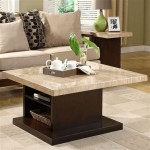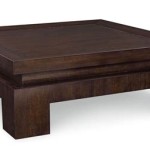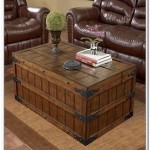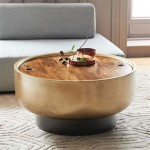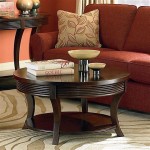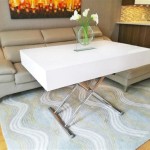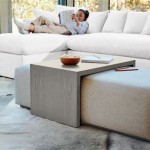How to Fix Outdoor Glass Tables: A Comprehensive Guide
Outdoor glass tables offer an enduring combination of style and functionality, allowing individuals to enjoy meals, conversations, and leisurely activities in open-air settings. However, the exposed nature of these tables subjects them to various forms of damage, ranging from minor scratches to significant cracks or breaks. Addressing these issues promptly and effectively is essential for maintaining the table's aesthetic appeal, ensuring its structural integrity, and preventing potential safety hazards. This article provides a detailed guide encompassing techniques and best practices for repairing outdoor glass tables, covering various types of damage and offering solutions applicable to both minor and more extensive repairs.
The repair process varies depending on the extent and nature of the damage. Minor scratches might only require polishing compounds, while significant cracks or breaks necessitate a more involved approach, potentially including resin fillers or even professional glass replacement. Prior to commencing any repair, a thorough assessment of the damage is crucial. This assessment informs the selection of appropriate materials and techniques, optimizing the chances of a successful and lasting repair. Understanding the type of glass used in the table – whether it's tempered, laminated, or another variety – is also important, as this influences the repair options available.
Addressing Scratches on Outdoor Glass Tables
Scratches are a common occurrence on outdoor glass tables, typically arising from everyday use, weather exposure, or accidental contact with abrasive materials. These scratches, while primarily aesthetic in nature, can diminish the table's overall appearance and, if left unattended, may deepen over time, becoming more difficult to rectify. Several methods exist for addressing scratches, ranging from simple DIY solutions to more specialized techniques involving polishing compounds and professional assistance. The choice of method depends on the severity of the scratches and the individual's comfort level with repair procedures.
For minor, superficial scratches, a commercially available glass polishing compound can often be effective. These compounds typically contain fine abrasive particles that gently buff away the edges of the scratch, blending it with the surrounding glass surface. The application process involves cleaning the glass surface thoroughly, applying a small amount of the polishing compound to a soft cloth or polishing pad, and then gently rubbing the compound over the scratch in a circular motion. After a period of polishing, the residue is removed, and the area is inspected. Multiple applications might be necessary to achieve the desired result. It is crucial to follow the manufacturer's instructions for the specific polishing compound being used to avoid further damage to the glass.
Another approach for addressing minor scratches involves the use of household items such as toothpaste. Non-gel toothpaste, particularly those containing baking soda, can act as a mild abrasive similar to glass polishing compounds. The application method is similar to that described above, involving gentle rubbing of the toothpaste over the scratch in a circular motion, followed by cleaning and inspection. While this method might not be as effective as specialized polishing compounds, it can be a viable option for very light scratches or when other materials are unavailable.
For deeper or more extensive scratches, professional glass polishing services may be required. These services utilize specialized equipment and techniques to remove scratches without damaging the surrounding glass. Professional polishing can restore clarity and transparency to the glass surface, effectively eliminating the appearance of scratches. It is advisable to obtain quotes from multiple service providers and inquire about their experience and techniques before committing to this option.
Repairing Cracks in Outdoor Glass Tables
Cracks in outdoor glass tables pose a more significant challenge than scratches, as they compromise the table's structural integrity and pose a potential safety hazard. Depending on the size, location, and nature of the crack, repair options range from using resin fillers to replacing the entire glass top. Addressing cracks promptly is critical to prevent further propagation of the damage and to ensure the table remains safe for use.
For small, hairline cracks, a specialized glass crack repair kit can be used. These kits typically contain a resin adhesive that fills the crack and bonds the glass together. The application process involves cleaning the crack thoroughly, applying the resin adhesive according to the manufacturer's instructions, and then allowing the resin to cure completely. Some kits also include a UV light to accelerate the curing process. It is important to choose a resin adhesive that is specifically designed for glass repair and that is compatible with the type of glass used in the table. The instructions provided with the repair kit should be followed meticulously to ensure a successful repair.
When dealing with larger cracks or cracks that extend to the edge of the glass, professional glass repair or replacement is strongly recommended. Attempting to repair such cracks using DIY methods can be risky and may result in further damage or even injury. Professional glass repair technicians have the expertise and equipment to assess the crack accurately and determine the most appropriate repair or replacement strategy. They can also ensure that the repair or replacement is performed safely and in compliance with relevant safety standards.
In some cases, it may be possible to reinforce a cracked glass table top by applying a transparent film to the underside of the glass. This film can help to prevent the crack from spreading and can provide additional support to the glass. However, this is typically a temporary solution and should not be considered a substitute for proper repair or replacement. Furthermore, it's important to select a film that is specifically designed for glass reinforcement and that is compatible with the type of glass used in the table.
Addressing Broken Glass on Outdoor Tables
A shattered or broken glass table top presents the most severe damage scenario and necessitates immediate action due to the inherent safety risks. Broken glass poses a significant laceration hazard and must be handled with extreme caution. The primary focus in this situation is safety, followed by determining the appropriate course of action to restore the table to a usable state.
The first step when dealing with broken glass is to ensure personal safety. Wear heavy-duty gloves and eye protection to prevent cuts and injuries. Carefully remove any large pieces of broken glass and dispose of them properly. Use a broom and dustpan to sweep up smaller shards of glass, and then use a vacuum cleaner with a hose attachment to remove any remaining fragments. It is important to thoroughly clean the area to eliminate any potential hazards. Double-bag the broken glass and label it clearly to prevent accidental injuries during disposal.
In the event of a broken glass table top, replacement is typically the only viable option. Attempting to repair a shattered glass surface is generally not feasible due to the extensive damage and the compromised structural integrity of the glass. When replacing the glass top, it is crucial to select a new glass top that is the same type and thickness as the original. This ensures that the new glass top will fit properly and will provide the same level of support and stability as the original. Tempered glass is often used for outdoor tables due to its increased strength and safety characteristics. If tempered glass breaks, it shatters into small, relatively harmless pieces, reducing the risk of serious injury.
When ordering a replacement glass top, it is important to provide accurate measurements to the glass supplier. Measure the length, width, and thickness of the original glass top carefully, and specify the type of glass required. Consider having the edges of the replacement glass top polished or beveled to prevent chipping and to provide a smoother, more finished appearance. Once the replacement glass top is received, install it carefully, ensuring that it is properly secured to the table frame. Use appropriate fasteners and hardware to prevent the glass top from shifting or falling off.
As an alternative to replacing the glass top with another glass top, consider using a different material such as wood, metal, or stone. These materials can provide a more durable and weather-resistant surface for outdoor tables. When selecting an alternative material, consider the overall style and design of the table and choose a material that complements the existing frame. Ensure that the alternative material is properly sealed and protected from the elements to prevent damage from moisture, sunlight, or other environmental factors.
Preventative maintenance is essential for prolonging the life of outdoor glass tables and minimizing the risk of damage. Regularly cleaning the glass surface with a mild soap and water solution can help to remove dirt, grime, and other contaminants that can scratch or damage the glass. Cover the table when it is not in use to protect it from the elements. Avoid placing heavy or sharp objects on the glass surface, and use coasters or placemats to prevent scratches and stains. By following these preventative maintenance tips, individuals can help to keep their outdoor glass tables in good condition for many years to come.

Upcycle Broken Glass Patio Table With Wood

How To Repair Glass Patio Table Problems

Broken Garden Table Upcycle Repair With Diy Drinks Wells

How To Patio Table Makeover

Diy Replace Broken Patio Glass Top Table

Diy Replace Glass Tabletop With Tile Weekend Warrior Wednesday Your Modern Family

A Fix For Rusted Outdoor Furniture Green With Decor

Makeover An Outdoor Table And Refresh Chairs Deeply Southern Home

Replacing The Broken Glass On Our Patio Table

Keep Your Glass Table Tops Clean Free From Sliding
Related Posts

